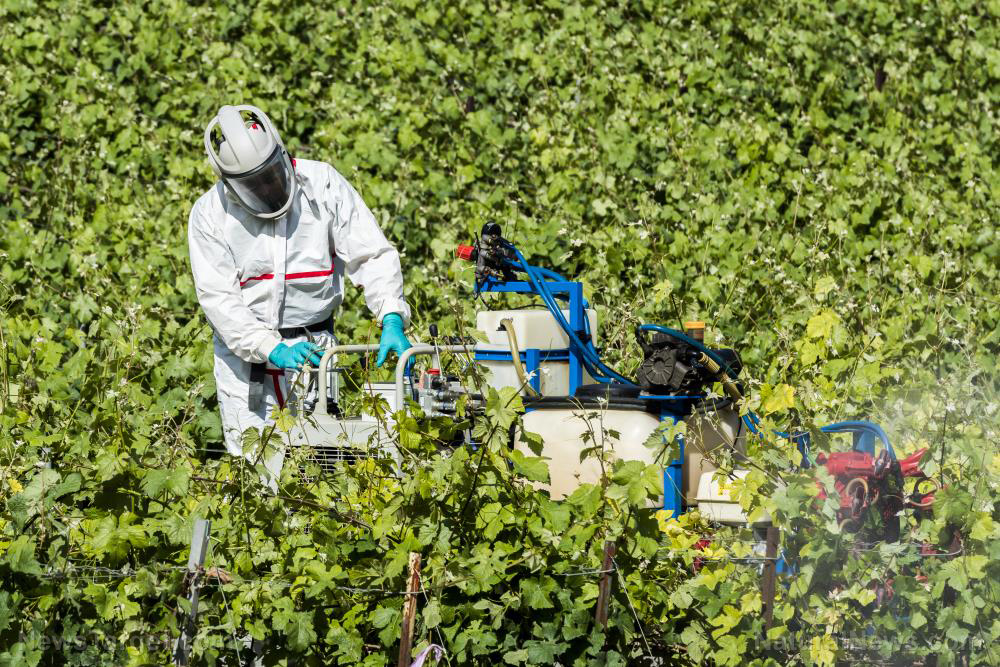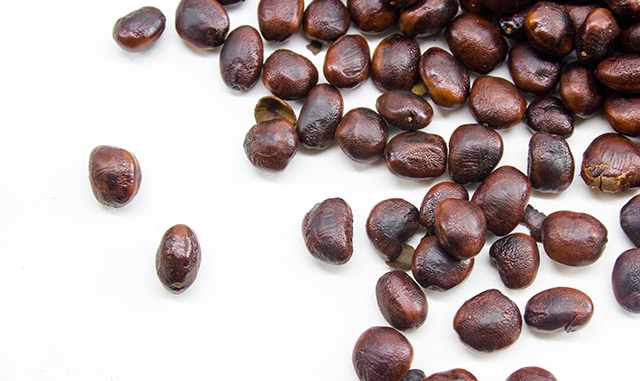Latest FDA Pesticide Monitoring Report reveals that nearly 50% of food samples contain pesticide “residues”
04/01/2019 / By Lance D Johnson

The Food and Drug Administration’s (FDA) Annual Pesticide Report for 2016 found pesticide “residues” in nearly 50 percent of the samples that the agency targeted across the United States and abroad. Six percent of the samples “violated” tolerable pesticide residue amounts.
The FDA tests for over 700 different pesticides and industrial compounds in both domestic and imported food products and agricultural commodities. The agency targets products that are most likely to contain pesticide residues, especially in imported goods. For 2016, the FDA tested 7,413 samples, which included 6,946 human foods and 467 animal foods. There were no pesticide residues detected at all in 52.9 percent of the domestic samples. While 99 percent of the domestic products complied with pesticide tolerance levels, 90 percent of human import foods did not. Almost half of the samples contained pesticide residues (47.1 %) and over 400 of the samples violated tolerable pesticide residue amounts established by the Environmental Protection Agency (EPA).
Who makes up the pesticide tolerance levels and why do they vary from one food to the next?
According to the EPA’s Code of Federal Regulations, tolerances are expressed in terms of parts by weight of the pesticide chemical per one million parts by weight of the raw agricultural commodity. The FDA’s “Pesticide Analytical Manual” details the analytical methods that are used to determine whether raw agricultural commodities are in compliance with the established tolerances. The question is: How are pesticide tolerance levels configured?
100% organic essential oil sets now available for your home and personal care, including Rosemary, Oregano, Eucalyptus, Tea Tree, Clary Sage and more, all 100% organic and laboratory tested for safety. A multitude of uses, from stress reduction to topical first aid. See the complete listing here, and help support this news site.
If the toxicology of a specific pesticide has been firmly established, then why is there such great disparity in the allowable tolerance residue from one commodity to the next? For example, in section 180.364, the tolerance level for glyphosate in asparagus is .5 parts per million (ppm). The tolerance level for glyphosate in carrots is ten times greater (5ppm). The tolerance residue level for barley is even more lenient (30ppm). For corn, the EPA tolerates 100ppm glyphosate, and for animal feed, the tolerance level is 800 times greater than asparagus (400ppm). How are the tolerance levels established in the first place? Are these tolerance levels adjusted per crop just to accommodate the demand for pesticide use? Why is .5ppm the tolerance level in one food but suddenly this same pesticide is safe at a concentration 800 times that level in another commodity? If the dose makes the poison, why is there such variance in allowable residue levels from one crop to the next?
Glyphosate is pervasive in corn and soybean samples, but no samples exceeded “tolerance residue” levels
In the 274 corn sample analyzed, 173 tested positive for glyphosate residues, but none of the measurements surpassed the EPA’s tolerance level for the herbicide. Out of the 267 soybeans samples, 178 tested positive for glyphosate residues, but there were no violations. The good news: There was no glyphosate residue detected in milk and egg samples. For a full list of pesticides detected, check out page 36-37 of the FDA’s Annual Pesticide Report. The findings from the report include:
The domestic violations occurred primarily in vegetables (3%), where mis-application, over-application and pesticide cross contamination occurs. Domestic grains were generally cleaner than imported grains. Out of 70 honey samples, only one sample was “violative.” All the other animal-derived ingredients were within tolerable levels, including venison, rabbit, elk, bison, milk, and eggs. Out of 177 whole grain and seed samples, two were “violative.” One soybean sample contained 2,4D pesticide greater than the tolerable level.
Imported food samples were more likely to violate the tolerable residue levels (9.8%) compared to domestic samples (.9%). Most of the foreign violations occurred in grains (19.7%) followed by vegetables (10.1%) and fruits (6.5%). There were no violations for dairy/eggs and minimal violations in fish (.7%). The import commodities of greatest concern include rice, with a violation rate of 29.7%. The greatest offenders were prickle pears, onions, leeks, papaya, mushrooms, cashews, spinach, and wheat gluten.
Still, the most important question remains: How are tolerance levels established for each pesticide and why do the levels vary from one food to the next? Also, what are the toxicological effects of intermixing pesticides? And finally, how does human DNA interact with these chemical residues over time, due to repeated exposure?
For more on environmental and human health protection, visit EPA.News.
Sources include:
Tagged Under: Animal Feed, corn, DNA damage, EPA, FDA, food safety, food science, food supply, glyphosate, herbicides, imported food, Papaya, pesticide food, pesticide violations, research, residue, rice, Soybeans, tolerance level, toxic ingredients, toxicology, weedkiller



















